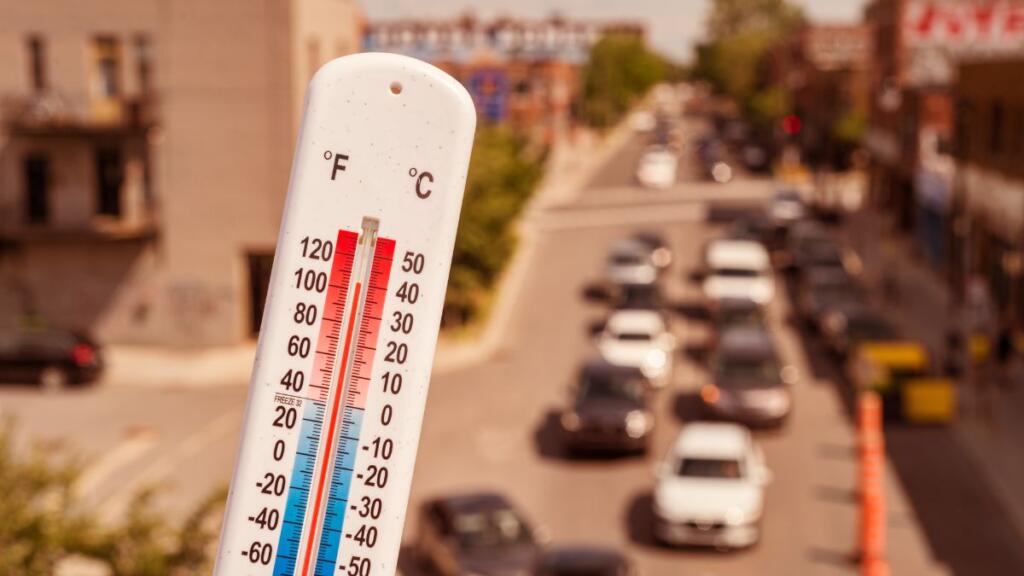This year, Delhi witnessed a historic event as the mercury soared past the 48-degree Celsius mark, shattering previous records. The Najafgarh area emerged as the nation’s hottest region. Such extreme temperatures are unprecedented and raise concerns about the impact of climate change, urban heat islands, and other factors contributing to the severity of heatwaves.
Nationwide Heatwave:
Across the country, several states are grappling with severe heatwaves. Delhi alone experienced scorching temperatures exceeding 48 degrees Celsius, warranting cautionary alerts in various regions including Delhi-NCR, Uttar Pradesh, Haryana, Punjab, Rajasthan, Gujarat, and Madhya Pradesh. The widespread nature of the heatwave underscores the need for comprehensive strategies to mitigate its effects and protect vulnerable populations.
Impact of Heatwaves:
While people endure the blistering heat, unexpected cloudbursts wreaked havoc in Pauri and Uttarkashi districts of Uttarakhand on May 22, exacerbating the situation. The torrential rain amidst scorching temperatures resulted in significant damage to infrastructure, agriculture, and livelihoods. Such extreme weather events highlight the urgency of adapting to climate change and implementing resilient measures to minimize the impact on communities.
Health Risks:
Heatwaves pose significant health risks, increasing the likelihood of heat-related illnesses and heat strokes. Hundreds of lives are lost to heat strokes, prompting continuous advisories from the weather department to avoid prolonged exposure to the sun. Vulnerable populations, including the elderly, children, and outdoor workers, are particularly at risk during heatwaves, emphasizing the importance of targeted interventions and public health awareness campaigns.
Nationwide Concern:
The intensity of the heatwave is a matter of concern across Delhi-NCR, Uttar Pradesh, Haryana, Punjab, Rajasthan, Bihar, Madhya Pradesh, Chhattisgarh, and Jharkhand. The forecast suggests sustained hot weather in northwest and northeast India, posing challenges for agriculture, water management, and energy consumption. Addressing the multifaceted impacts of heatwaves requires coordinated efforts at the national, state, and local levels, encompassing disaster preparedness, infrastructure resilience, and community engagement.
Temperature Records:
Record-breaking temperatures were observed in various regions, indicating a trend of rising temperatures and more frequent heatwaves. In Rajasthan’s Barmer, temperatures soared to 48 degrees Celsius, while Phalodi, Fatehpur, and Churu recorded temperatures above 47 degrees Celsius. Gujarat witnessed temperatures above 45 degrees Celsius, underscoring the need for robust climate monitoring systems and early warning mechanisms to mitigate the risks associated with extreme heat events.
Impact on Resources:
The intense heatwave has strained resources, with increased electricity demand and drying water sources exacerbating conditions. Nearly 150 major reservoirs in the country are at their lowest levels in five years, intensifying water scarcity and affecting hydroelectric production. The depletion of natural resources highlights the interconnectedness of environmental sustainability and climate resilience, calling for innovative solutions to ensure the availability of essential services and mitigate the adverse effects of heatwaves on ecosystems and livelihoods.
Pre-Monsoon Cyclones and Changing Weather Patterns
Absence of Cyclones:
The absence of pre-monsoon cyclones this year has raised questions about the unusual weather patterns. Typically, these cyclones, originating in the Arabian Sea, bring rain accompanied by stormy winds, impacting weather conditions. The lack of cyclonic activity may be attributed to various factors, including atmospheric conditions, oceanic temperatures, and global climate patterns. Studying the dynamics of pre-monsoon cyclones is essential for understanding regional climate variability and improving seasonal forecasting capabilities, enhancing preparedness for extreme weather events and minimizing their socio-economic impacts.
Changing Weather Patterns:
The onset of Delhi’s heatwave can be attributed to changing weather patterns influenced by various factors. Climate change, urbanization, and environmental degradation contribute to rising temperatures, exacerbating heat-related challenges in the city. Additionally, the interplay of global weather phenomena such as El Niño and La Niña can influence regional climate patterns, impacting Delhi’s weather conditions.
Mitigation and Adaptation Strategies:
Addressing the challenges posed by the heatwave requires a multi-faceted approach encompassing mitigation and adaptation strategies. Urban planning initiatives focused on enhancing green spaces can mitigate the urban heat island effect and enhance climate resilience. Additionally, public awareness campaigns and community-based interventions are essential in fostering heatwave preparedness and protecting vulnerable populations.
Also Read: Environmentalists say that nuclear energy is dangerous for the environment and then there is Gabon
